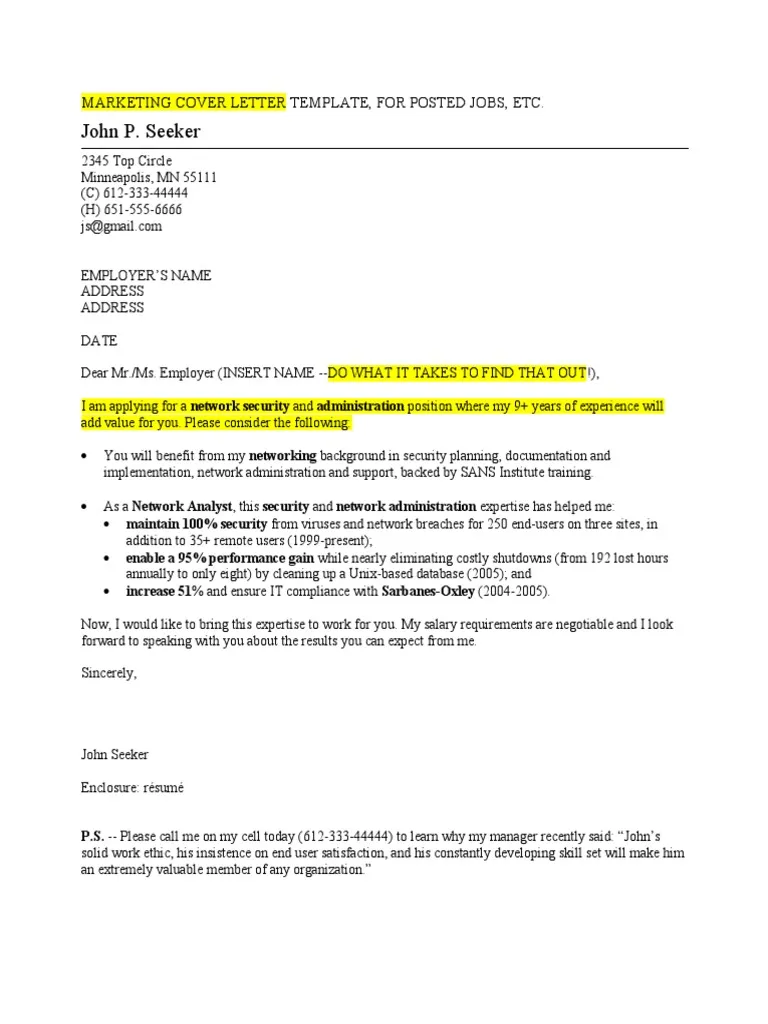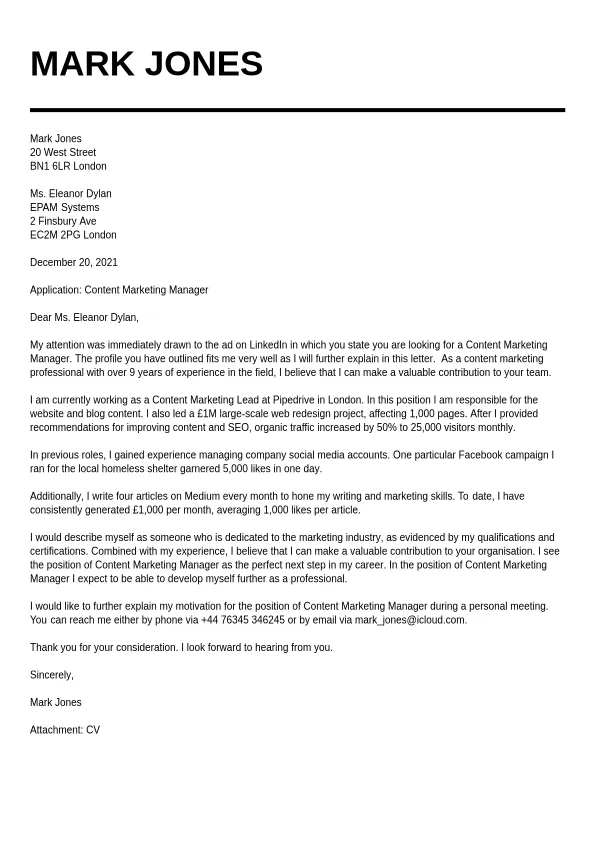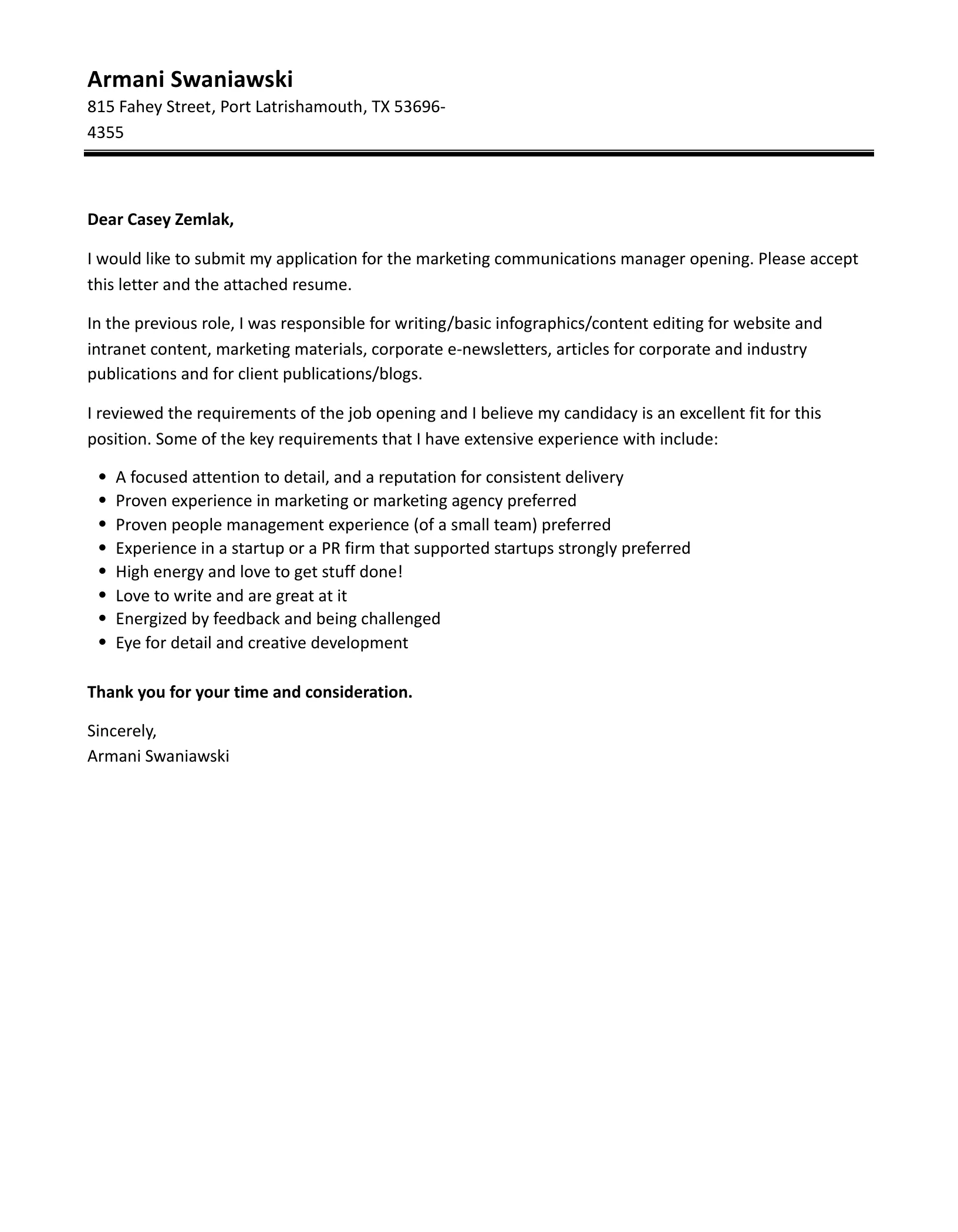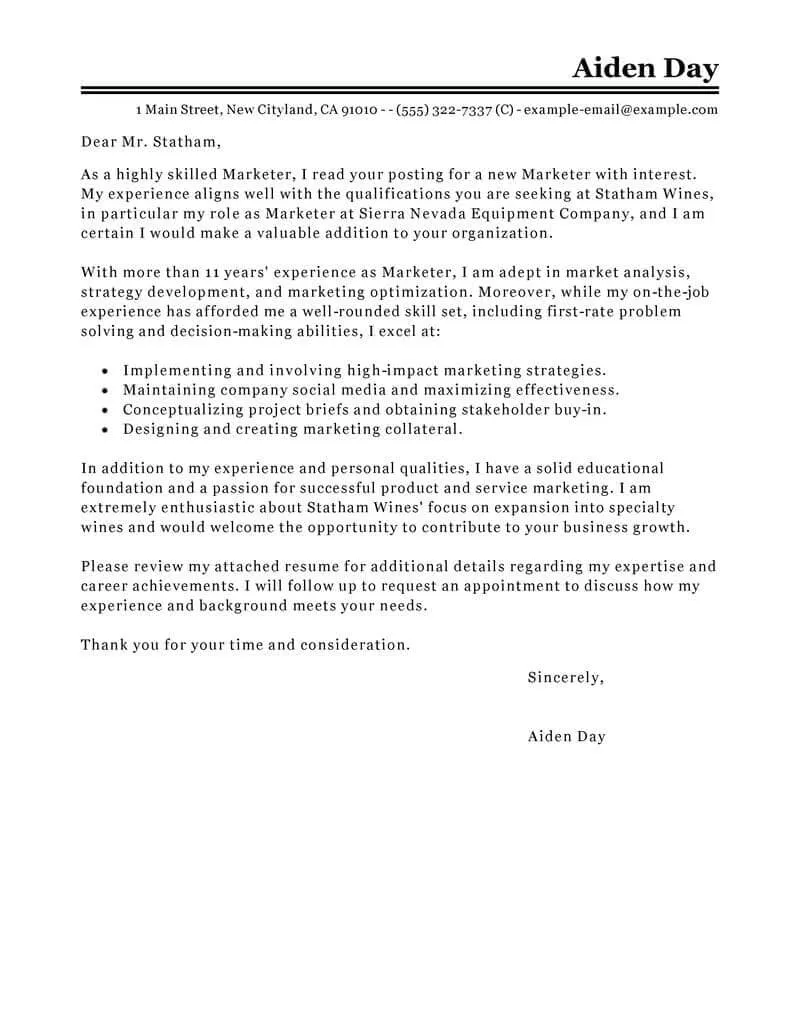Why a Marketing Cover Letter Matters
In the competitive world of marketing, a well-crafted cover letter is your secret weapon. It’s your first impression, a chance to go beyond your resume and showcase your personality, passion, and potential. A cover letter provides context, allowing you to explain your career trajectory, highlight key skills, and demonstrate your understanding of the specific role and company. Think of it as a personalized marketing campaign—for yourself! It allows you to connect the dots between your experiences and the job requirements, making you a more compelling candidate. Neglecting this crucial step means missing an opportunity to set yourself apart from the crowd, where most applications have the same resume, but only some has a cover letter. A marketing cover letter allows you to explain why you are the best choice for this job and to build a narrative that shows your value to the company.
Highlight Your Marketing Skills
Your cover letter should be a marketing brochure for your skills. Identify the key skills the employer is looking for in the job description. Then, provide specific examples of how you’ve used those skills to achieve results. Do you have experience with social media marketing, content creation, SEO, email campaigns, or data analysis? Provide examples that show you understand how to make strategic decisions. Did you increase website traffic, generate leads, or boost sales? Quantify your achievements whenever possible, using numbers and data to demonstrate the impact of your work. For example, instead of saying “Improved social media engagement,” say “Increased social media engagement by 30% in six months by implementing a new content strategy.” Tailor your skills to the job at hand—showcasing the skills and experience that are most relevant to the specific position is crucial to landing the role.
Showcase Your Achievements

It’s not enough to simply list your skills; you need to prove you can deliver results. Your cover letter is the perfect space to highlight your achievements. Start by selecting 2–3 of your most significant accomplishments that are relevant to the job. This could include successful marketing campaigns, projects that resulted in a measurable increase in revenue, or initiatives that improved brand awareness. Use the STAR method (Situation, Task, Action, Result) to structure your accomplishments. Describe the situation, the task you were assigned, the actions you took, and the results you achieved. For example, “In my previous role at XYZ Company, I identified a need for a new email marketing strategy (Situation). I was tasked with developing and implementing this strategy (Task). I researched industry best practices, segmented our audience, and created targeted email campaigns (Action). As a result, we saw a 25% increase in click-through rates and a 15% increase in sales conversions (Result).” This method provides a clear, concise, and compelling narrative of your success.
Tailor Your Cover Letter
Generic cover letters are a red flag for hiring managers. To make your cover letter stand out, you must tailor it to each specific job and company. Start by researching the company—understand their mission, values, products or services, and target audience. Then, carefully read the job description and identify the key requirements and qualifications the employer is seeking. In your cover letter, address these requirements directly. Use the same keywords and phrases that are used in the job description, showing that you understand what the company is looking for. Explain how your skills and experience align with their needs, and provide specific examples that demonstrate your ability to meet their expectations. Personalize your letter by mentioning something specific about the company that resonates with you, or a recent project or campaign that caught your attention. This demonstrates genuine interest and that you have taken the time to understand what the company does.
Marketing Cover Letter Structure
A well-structured cover letter is easier to read and more impactful. A clear structure helps you present your information in a logical and organized manner, making it easier for the hiring manager to understand your qualifications and value proposition. A standard cover letter usually includes a header, an opening paragraph, body paragraphs, and a closing paragraph. Each section has a specific purpose and contributes to the overall effectiveness of your cover letter. Following this structure will ensure that you convey your message in a clear and professional way.
Header

Your header should include your contact information—name, phone number, email address, and LinkedIn profile URL (optional). Make sure your contact information is accurate and up-to-date, so the hiring manager can easily reach you. Add the date and the hiring manager’s name and title, and the company’s name. If you don’t know the hiring manager’s name, you can use “Dear Hiring Manager” or “Dear [Department Name] Team.” Ensure that the header is clean, professional, and easy to read. This sets the tone for the rest of your cover letter and demonstrates your attention to detail.
Opening Paragraph
Your opening paragraph is your first chance to grab the reader’s attention. Start by stating the position you’re applying for and where you found the job posting. Then, briefly mention why you’re interested in the role and the company. Use a strong hook—something that immediately captures the reader’s interest. You might mention a relevant achievement, a skill that aligns with the job requirements, or your passion for marketing. Clearly state the value you bring to the table in the first sentence. Focus on the positive—show enthusiasm for the opportunity and the company. Keep it concise and to the point, aiming to entice the reader to continue reading. This initial paragraph is crucial in setting the tone and encouraging the hiring manager to learn more about your qualifications.
Body Paragraphs
The body of your cover letter is where you showcase your skills, experience, and achievements in detail. This section is critical, as it provides the substance of your application. Each paragraph should focus on a specific point and support it with concrete examples. Typically, you will write 2-3 body paragraphs. In the first body paragraph, highlight your most relevant skills and experiences, showing how they align with the job requirements. In the second body paragraph, provide specific examples of your achievements, using the STAR method. Quantify your results whenever possible. In the third body paragraph, discuss your understanding of the company and the industry, and show how you can contribute to the company’s success. Demonstrate your research and understanding of the company’s goals, challenges, and opportunities. Connect your skills and experience to their specific needs.
Closing Paragraph

Your closing paragraph should reiterate your interest in the position and the company. Summarize your key qualifications, emphasizing why you’re the ideal candidate. Include a call to action, such as “I am eager to discuss how my skills and experience can contribute to [Company Name]’s marketing goals.” Thank the hiring manager for their time and consideration. Express your enthusiasm for the opportunity to learn more about the role and the company. Provide your contact information again, making it easy for the hiring manager to reach you. End on a positive and confident note, leaving the hiring manager with a strong, lasting impression.
Proofread and Edit
Before submitting your cover letter, take the time to proofread and edit it carefully. Errors, typos, and grammatical mistakes can undermine your credibility. It shows a lack of attention to detail, which is a critical skill in marketing and communications. Read your cover letter out loud to catch any awkward phrasing or sentences that don’t flow smoothly. Ask a friend, family member, or career counselor to review it for clarity, accuracy, and professionalism. Make sure the tone is consistent and appropriate for the job and the company. Consider the language you are using, ensuring it is professional and appropriate for the intended audience. Proofreading and editing are essential steps in the cover letter writing process; by taking the time to polish your cover letter, you increase your chances of making a strong and positive impression.
Mastering the art of the marketing cover letter is a key step in your job search. By highlighting your skills, showcasing your achievements, tailoring your letter, and following a clear structure, you can significantly improve your chances of landing your dream job.
